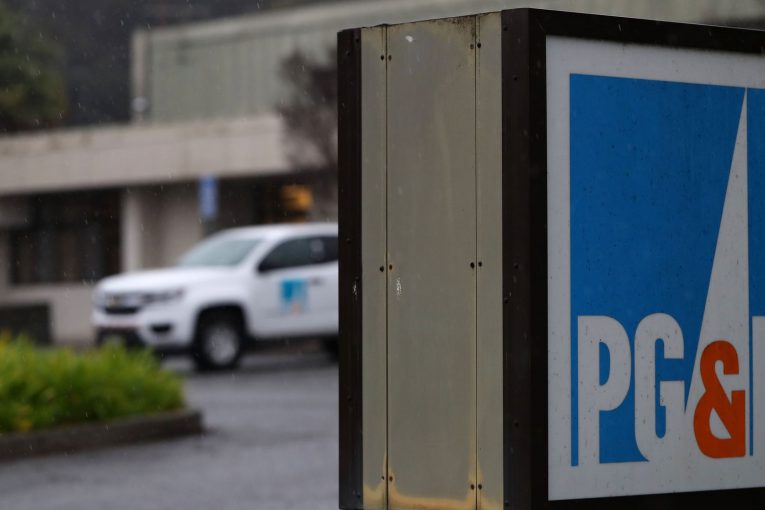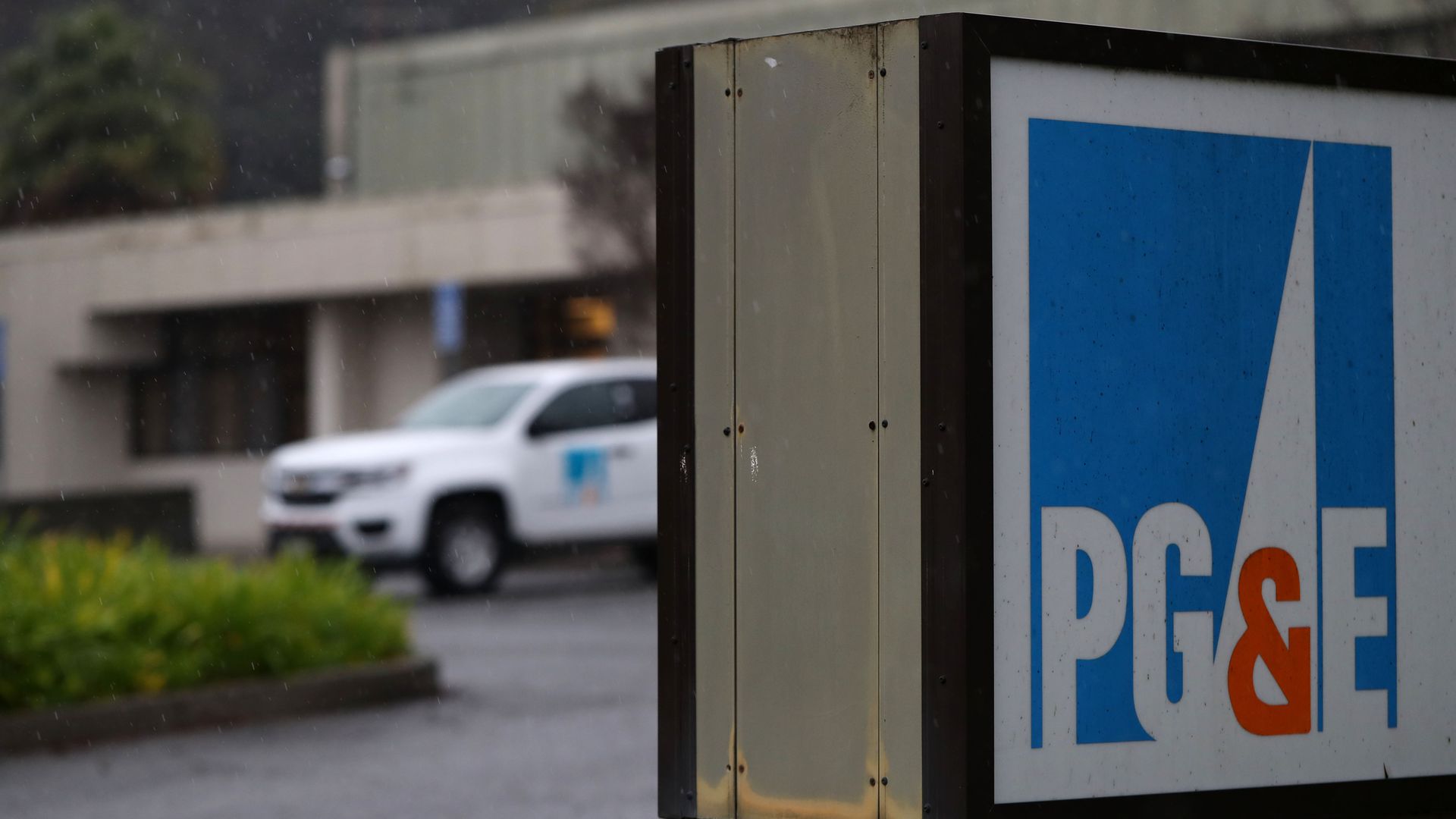

It is hard to blame Governor Gavin Newsom for the problems involving PG&E and the threat of wildfires fueled by howling winds and dry conditions. But he only has to look to 2003 to know what can happen to him if he doesn’t act and act decisively.
This week, he pushed back.
PG&E’s Chief Executive Bill Johnson told the CPUC, “I think this is probably a 10-year timeline to get to a point where it’s really ratcheted down significantly.”
My first thought was – are you kidding me?
That was probably Governor Newsom’s as well. He called it “an absurd period of time.” On Tuesday, he added, “This is not the new normal… And it doesn’t take a decade to fix this damn thing.”
As the Bee put it, “The new governor has a lot on the line. While he reminds audiences he’s been in office just nine months, Newsom’s stewardship of the crisis will be a key chapter in his political career.”
This is precisely what led to Gray Davis being recalled – granted, more time on the job and other problems there as well. But it is a lesson that the governor needs to take to heart.
So later this week in a Medium post the governor responded: “For decades, PG&E failed to prioritize public safety. Their lack of safety investments left PG&E – and nearly half of Californians – with an antiquated electrical system that is vulnerable to weather events and not at all prepared for the more extreme weather associated with the climate change that has been predicted for the past several decades and is now here.”
He added that this has led to the current crisis: “Millions of Californians lost power for days at a time. Far too many households and businesses were without power for seven days straight.”
He reiterated: “This cannot – and will not – be the new normal. California demands better. PG&E customers deserve a utility that leads the nation – just like our state’s fire and emergency  response personnel.”
response personnel.”
The message: PG&E must make “fundamental change” and they must do so “ahead of next year’s fire season.”
Then the kicker.
“PG&E as we know it may or may not be able to figure this out. If they cannot, we are not going to sit around and be passive,” Newsom said at a press conference. “If Pacific Gas and Electric is unable to secure its own fate and future … then the state will prepare itself as backup for a scenario where we do that job for them.”
That is scary language for some. But it is not the immediate move for the governor. The first step, one that is likely to rile up those on the left more than the right, is to appoint an “energy czar” – one that will guide PG&E out of bankruptcy.
If that doesn’t work, the potential takeover of the utility is next.
The response to the governor on social media from the right was as one would expect – blaming California governance rather than PG&E for the problems.
But the question I asked people that no one would address: which is run better – PG&E or SMUD?
There was an interesting article in the News and Review this past March, and it argued that SMUD while better than PG&E, was “not perfect.”
The bottom line from the article, though, is this: “[I]t’s far better to get your power from SMUD than PG&E, especially these days.
“The Sacramento Municipal Utility District charges lower rates and is generally well managed. And it hasn’t put residents in danger, unlike Pacific Gas & Electric, which in January filed for bankruptcy due to all the lawsuits from deadly wildfires it caused.”
Still, the article notes “that does not mean that SMUD is perfect, or that its customers are completely off the hook.”
A few years ago the city of Davis briefly looked into a Municipal Utility District of its own after attempts to join SMUD in 2006 were voted down amidst a $10 million disinformation campaign by PG&E.
What the local county did form was Community Choice Energy, a joint powers authority that purchases electricity from PG&E but relies on the distribution system in place by PG&E.
However, a few weeks ago, there was the potential that this could change. VCE (Valley Clean Energy) announced: “The board of Yolo County’s clean power agency has submitted a $300 million bid to purchase Pacific Gas & Electric’s lines, poles and other electricity distribution assets within Yolo County.”
If successful, that would “enable the creation of a locally owned and operated public utility that the board has concluded would result in a more successful, efficient and safe electricity system.”
In a press release, VCE noted, “Purchase of the local PG&E power poles and lines would allow for the creation of a Yolo County-based public utility similar in nature to those found in Lodi, Roseville, Sacramento (SMUD) and other communities across the state.”
They added, “Circumstances surrounding PG&E’s January bankruptcy filing have created this unique opportunity to reimagine a more successful, efficient and safe electricity system in Yolo County and other areas of PG&E’s service territory.”
Bottom line is that the public ownership of energy resources and public power are not some far-fetched pipe dream. They are the reality that we could be operating under in Yolo County, just as they have been in Sacramento and elsewhere.
By one count, SMUD is one of 40 long-standing publicly owned utilities already operating in the state. Using these as a model, the state could take over the operations from PG&E without much difficulty. The cost to fix the problem is going to be enormous – but it’s going to be enormous no matter how we approach it.
Yolo County, for example, is looking at a $300 million cost. In September, San Francisco made a $2.5 billion bid for the PG&E electric system.
But the cost of the status quo is enormous as well – power outages for days at a time will take a toll on the economy as well as the health and well-being of vulnerable residents. The cost of wildfires is estimated to be about $400 billion in 2018 – and likely only to go up.
The cost just to put out the fires was $1 billion.
Governor Newsom’s tenure could well be defined by how he responds to the PG&E and wildfire threats. But a public power option is definitely one that should be explored.
—David M. Greenwald reporting


PG&E is only valued at $3.4 billion by Wall Street. Why buy the system’s assets when the entire company could be taken over. For $2.5 billion SF could but a majority stake. For $300 million Yolo could buy almost 9%. Its easy to see that if all the customers and communities banded together they could easily take over the entire company for a fraction of what buying the assets would cost. No matter what happens these same people will eventually pay the bill to improve the system and cover the liabilities. They may as well own it too.
Here’s my first thoughts on this. https://mcubedecon.com/2019/10/30/should-california-just-buy-pge/
I will have another blog post on this next Tuesday: https://mcubedecon.com/
Here’s what I see as the problem… “unfunded liabilities” (sound familiar?)… stockholders might prefer to be bought out, rather than face judgments against the assets due to fires, gas explosions, etc.
I doubt the “book value” of the assets take into account the depreciation of the assets, and potential liabilities… that math should be done before the pubic acquires the system. Also all outstanding pension, medical, etc. for existing PG&E employees and retirees.
If the public takes it over, who will run it? Who will maintain it? Will they be under PERS?
Doesn’t seem like folk are looking at the financial math…
If a deal looks too good to be true, it probably is…
Might be viable, might not… suggest folk look at the financials in more detail, before commitment…